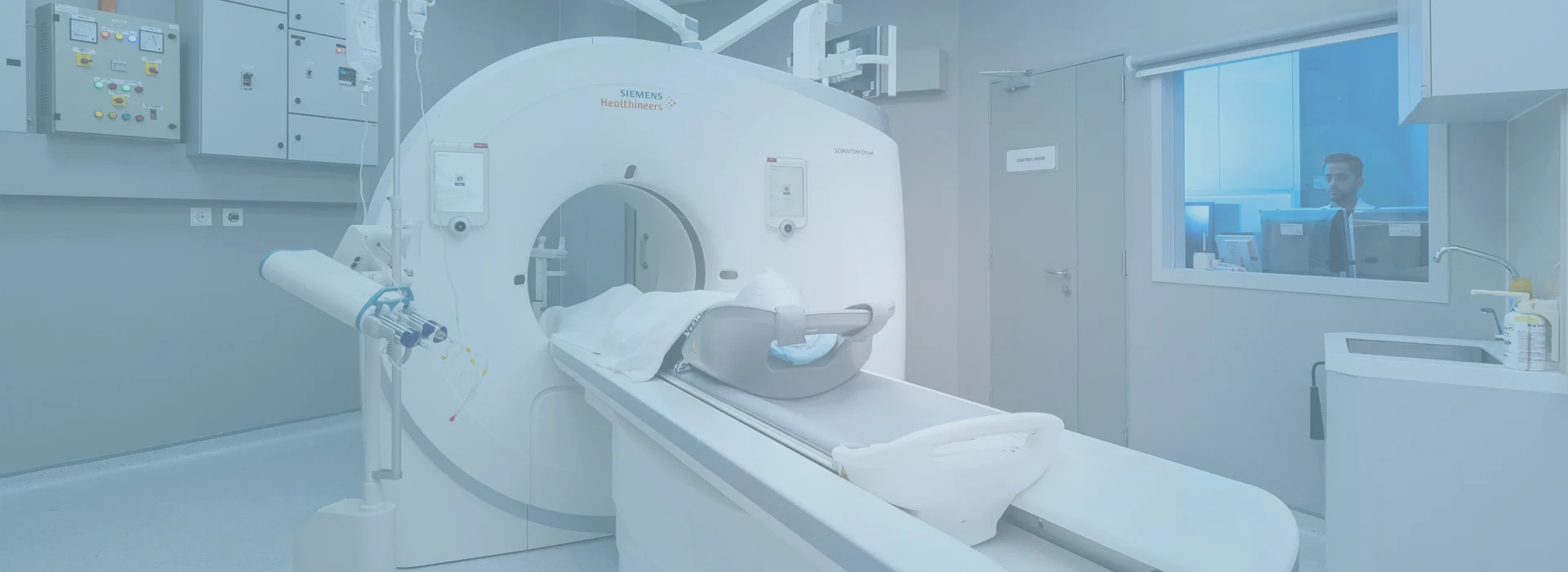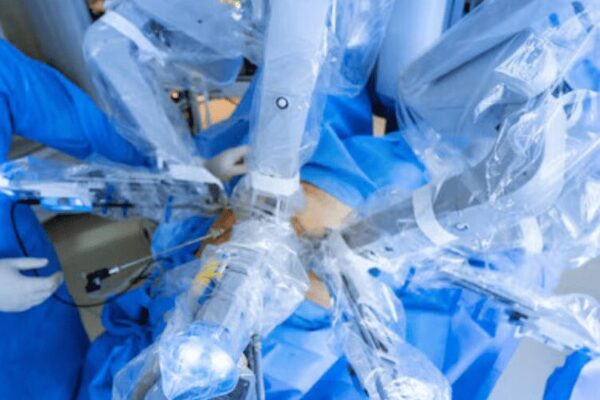
30 Apr Liver Cancer: When is Liver Surgery Recommended?
Liver Cancer: When is Liver Surgery Recommended?
By Island Hospital | Apr 30, 2020 11:49:40 AM
If you place your right hand over the area under the ribs on the right side of your body it will just about cover the area of your liver. Your liver is the largest gland, and the largest solid organ in the body, weighing some 1.3kg – 1.8kg. Approximately 1.5 liters of your total blood supply flows through it every minute and has many important functions. The liver is a vital organ and the only one that has the ability to regenerate itself. Up to 75% of the liver can be removed as long as the remaining liver tissue is healthy. The liver is an amazing organ and has the ability to re-grow, even if a large part of it is removed.
You cannot live without your liver. It has many important functions:
- It breaks down and stores many of the nutrients absorbed from the intestine that your body needs to function. Some nutrients must be changed (metabolised) in the liver before they can be used for energy or to build and repair body tissues.
- It makes most of the clotting factors that keep you from bleeding too much when you are cut or injured.
- It delivers bile into the intestines to help absorb nutrients (especially fats).
- It breaks down alcohol, drugs, and toxic wastes in the blood, which then pass from the body through urine and stool.
Liver Cancer also known as hepatic cancer and primary hepatic cancer, is cancer that starts in the liver.Liver cancer is the growth and spread of unhealthy cells in the liver. Cancer that starts in the liver is called primary liver cancer. Cancer that spreads to the liver from another organ is called metastatic liver cancer.
According to the World Health Organization (WHO), globally, liver cancer is also responsible for the fourth largest number of deaths in 2018, accounting to 782,000 deaths worldwide.
Liver cancer is a life-threatening condition that demands urgent medical care. More often than not, liver cancer occurs gradually and over many years.
While the exact cause of liver cancer may not be known, several factors may increase the risk of developing the disease. Because no widely recommended routine screening tests have been developed for liver cancer, people with a family history of the disease or other risk factors should consult their doctors about steps they can take to monitor or reduce their risk.
Most people who get liver cancer get it in the setting of chronic liver disease (long-term liver damage called cirrhosis), which scars the liver and increases the risk for liver cancer. Anything that increases your chance of getting a disease is called a risk factor. Having a risk factor does not mean that you will get cancer; not having risk factors doesn’t mean that you will not get cancer. The causes of liver cancer may be linked to environmental, dietary, or lifestyle factors. Liver cancer clearly has many different causes, and there are undoubtedly many different genes involved in its development.
The following are risk factors for liver cancer:
- Cirrhosis is a disease in which liver cells become damaged and are replaced by scar tissue. People with cirrhosis have an increased risk of liver cancer. Most (but not all) people who develop liver cancer already have some evidence of cirrhosis.
- Virus in Hepatitis B & C can attack the liver and weakens its ability to perform important tasks like filtering toxins and maintaining the level of sugar in the blood.
- Obesity (very overweight) increases the risk of developing liver cancer. This is probably because it can result in fatty liver disease and cirrhosis.
- Heavy alcohol consumption for many years or being an alcoholic can lead to cirrhosis, which in turn, can lead to liver cancer.
- Eating foods tainted with Aflatoxin These are cancer-causing substances made by a fungus that contaminates wheat, corn, soybeans, rice and some types of nuts. Contamination usually occurs due to storage of the food stuff in a moist, warm environment, more common in warmer and tropical countries. Long-term exposure to aflatoxins is a major liver cancer risk factor, especially in people with hepatitis B or C infections.
- Diabetes Having diabetes may also increase the risk of developing liver cancer.
Some lifestyle risk factors, like alcohol consumption, can be changed. Others, like a person’s age or family history, cannot be changed.
It is often hard to find liver cancer early because signs and symptoms often do not appear until it is in its later stages. Small liver tumors are hard to detect on a physical exam because most of the liver is covered by the right rib cage. By the time a tumor can be felt, it might already be quite large and surgery is needed.
A malignant tumour (cancer) is the most common indication for a liver resection. Based on the origin, tumours in the liver are categorised into:
- Primary tumours: they develop within the liver; and
- Secondary (Metastatic) tumours: they develop in some other organ and migrate (spread) to the liver usually through the blood stream.
Colorectal (cancer of the colon or rectum) cancer is the most common cause of secondary liver cancer. Single or multiple metastases involving the different lobes of the liver can be resected with a high success rate, depending on the distribution, number and stage of the primary tumour.
The symptoms of liver cancer may differ for each person, and any one of these symptoms may be caused by other conditions. Some common early warning signs of liver cancer include:
- Pain in the upper abdomen on the right side or near the right shoulder blade
- Enlarged liver (hepatomegaly) felt as a mass under the ribs on the right side
- Abdominal swelling (ascites) or bloating in the abdomen that develops as a mass
- Jaundice, which appears as yellowing of the skin and eyes and occurs when the liver is not functioning properly
Other signs and symptoms of liver cancer include:
- Weight loss not associated with changes in diet
- Decrease in appetite or a feeling of fullness after a small meal
- Nausea and vomiting not associated with other known conditions
- General weakness and/or fatigue that is persistent, ongoing weakness or fatigue
- Fever that is unrelated to other conditions
- Enlarged spleen felt as a mass under the ribs on the left side
Many symptoms of liver tumours may be similar to signs of other types of benign liver infections or diseases. In the case of liver cancer, the symptoms will continue to evolve and worsen as the tumour grows and the disease advances. It is important to see a doctor for an accurate diagnosis if you have any of the above signs of liver cancer.
Which option is appropriate for you depends on how much liver damage has been caused by cancer or other conditions and whether the cancer has spread elsewhere in the body.
Liver cancer treatment depends on:
- The liver’s condition
- The size, location and number of tumours
- If the cancer has spread outside the liver
- The person’s age and overall health
Treatment options if the cancer has not spread and the rest of the liver is healthy are:
- Transplant If the cancer has not spread, for some patients, a liver transplant (replacement of the liver) may be an option.
- Surgery If the cancer has been found early and the rest of the liver is healthy, doctors may perform surgery to remove the tumour from the liver (liver resection).
- Radiofrequency Ablation uses a special probe to destroy cancer cells with heat.
Liver resection is the surgical removal of a portion of the liver. This operation is usually done to remove various types of liver tumours that are located in the resected portion of the liver. The goal of liver resection is to completely remove the tumour and the appropriate surrounding liver tissue without leaving any tumours behind. Liver resection is a surgery to remove a piece of the liver. Up to one-half of your liver can be removed if the rest of it is healthy. The doctor made a cut, called an incision, in your belly to take out part of the liver.
The purpose of liver resection is to remove any part of the liver that is damaged and preserve as much healthy liver as possible. When someone is diagnosed with liver cancer, doctors will try to figure out if it has spread, and if so, how far and decides on the best possible treatment.
Liver resection is an operation that is performed to remove various types of liver tumors such as like cancer, cirrhosis, and cysts. The tumours may be cancerous or benign (non-cancerous).
The goal of liver resection is to completely remove the tumour and the area around the tumor without leaving any portion of the tumour behind. A larger part of your liver can be safely removed if the rest of your liver is healthy.
Liver resection may also be employed for benign tumours of the liver such as hepatic cyst, hepatic adenoma, and rarely hemangioma. Liver resection can either be performed by an open technique or laparoscopically.
The prognosis (chance of recovery) and treatment options depend on the following:
- The stage of the cancer (the size of the tumor, whether it affects part or all of the liver, or has spread to other places in the body).
- How well the liver is working.
- The patient’s general health, including whether there is cirrhosis of the liver.
The medical treatment chosen depends upon how much the cancer has spread and the general health of the liver. For example, the extent of cirrhosis (scarring) of the liver can determine the treatment options for the cancer. Similarly, the spread and extent of spread of cancer beyond the liver tissue plays an important part in the types of treatment options that may be most effective.
Liver resection is recommended to treat some types of cancer originating in the liver (hepatocellular cancer, bile duct cancer, and gallbladder cancer), and occasionally benign liver tumors that are causing pain or other problems.
For some people, the operation is straightforward and can be done immediately. Other people may need to have some chemotherapy or other treatments first, to try and shrink the tumours, making them easier to remove.
At Island Hospital, you will be evaluated by our Gastrointestinal Surgeon to determine if liver resection is the right option for you. Surgery will only be considered if the cancer is contained in one area of your liver and has not spread to any other part of your body.
Removing the cancer and the surrounding tissues in your liver is known as a resection. Your surgeon is only likely to consider a resection if:
- the cancer is small
- your liver is healthy, no cirrhosis (a chronic, ongoing, long-term disease of the liver)
- single tumour that has not grown into blood vessels
- liver cancer has not spread beyond the liver
The type of liver surgery you have depends on the size and position of the tumour(s). You may have one of the following surgeries:
- Hemi-hepatectomy to remove either left or right half of the liver
- Segmentectomy is removal part of the liver according to it blood supply branches as the liver is divided into 8 segments from I – IV.
The procedure removes the part of the liver with the tumour and some of the healthy liver tissue around it. This helps to keep the cancer from spreading to other parts of the body.
Up to three quarters of the liver can be removed as long as the rest is healthy and can continue performing normal liver functions, which are essential for life.
Doctors may use CT or MRI scans to plan a surgery. These imaging studies provide detailed views of the tumour, liver, surrounding blood vessels, and other structures that can help doctors pinpoint the location of the tumour or tumours before the procedure.
Liver resection can either be performed by an open surgery or laparoscopic surgery.
Open surgery: May be recommended for large tumours or those that are located deep within the liver. In an open procedure, surgeon makes an incision that is several inches long across the right side of the abdomen, just below the ribcage. Surgeon will carefully dissect the section of liver that is to be removed from the many veins, arteries and bile ducts that support it.
Laparoscopic surgery: In some situations, it may be possible to have keyhole (laparoscopic) surgery to remove the affected part of the liver. Several small cuts (incisions) are made instead of one large cut. Generally about three small cuts and one larger cut are needed. At Island Hospital, we also use minimally invasive laparoscopic surgery for some patients with liver tumors. It is now becoming more common for liver tumours to be removed with several smaller cuts.
Surgeon will insert a tiny tube with an eyepiece at one end, and a light and a magnifying lens at the other (laparoscope) into one of the cuts and will remove tissues with the tool at the end of the laparoscope.
People who have laparoscopic surgery usually have much smaller wounds, so you have less pain, a faster recovery time and shorter hospital stay. However, laparoscopic surgery is not suitable for everyone if the size and/or number of tumours would make the operation too complex to be carried out.
Most liver resections include removing your gallbladder because it is in the middle of your liver and it is often attached to the piece of liver that needs to be removed.
You can live with only a part of your liver working. When a portion of the liver is removed, the remaining liver can grow back (regenerate) if your liver is healthy. This growth occurs over 6-8 weeks. Although its shape will be different, you will not notice any difference.
This regeneration does not occur for patients with cirrhosis of the liver or an otherwise unhealthy liver. Good nutrition with a high-protein diet is important for liver regeneration.
It will be some time before you regain the energy you had before the operation. It is important to be aware that it may take weeks and even some months before you feel completely fit again. Rest as much as possible, gradually increasing your level of activity as soon as you feel comfortable.
Liver surgery can be complex, because the organ contains many important blood vessels. For example, after the portal vein brings blood to the liver, the blood leaves the organ through hepatic veins to the major vein in the abdomen that returns blood to the heart. Island Hospital surgeons are skilled in removing cancer while protecting important arteries and veins, preserving as much healthy tissue as possible.
Steps to reduce the risk of liver cancer include:
- Regularly see a doctor who specialises in liver disease
- Talk to your doctor about viral hepatitis prevention, including hepatitis A and hepatitis B vaccinations
- Take steps to prevent exposure to hepatitis B and hepatitis C.
- If you have cirrhosis or chronic liver disease, follow your doctor’s recommendations for treatment and be screened regularly for liver cancer
- If you are overweight or obese, diabetic, or drink heavily, talk to your doctor.
Keep in mind that many cancers do not have symptoms in their early stages. And if you do have symptoms, they could also show up with other conditions, so you will need tests to find out the cause. Make an appointment with your doctor if you experience any signs or symptoms that worry you.
Island Hospital is committed to provide our patients with the highest quality cancer care available through our dedicated team of cancer care professionals. Patients who come to Island Hospital benefit from our team of specialists who work together to treat and assist you and your family. Patients have access to a full range of services, including early detection, prevention, wellness, nutritional guidance and psychological support.







